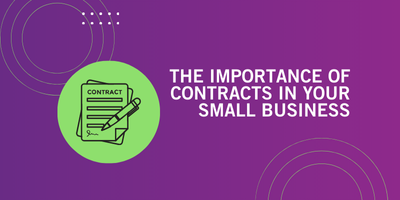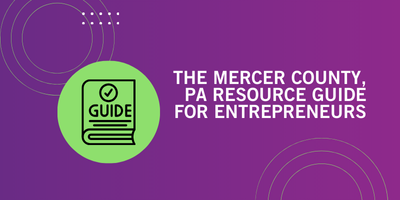3 Methods for Calculating the Value of Your Small Business
How much is your small business worth? Finding out may be easier than you realize. Just use one of the following methods of small business valuation: asset value plus, EBITDA multiple method, and revenue multiple method.
Why you should know how much your small business is worth
There are a lot of good reasons for knowing how much your business is worth. Maybe you’re buying out a partner, applying for a loan or grant program, or issuing equity. It’s also good to know so you can set a baseline and track your business’s change in value.
Knowledge is power whenever you enter negotiations or an agreement. For your business, that means knowing what your business is worth. Approaching negotiations knowing your business’s value will work in your favor.
How to calculate three small business valuation methods
In a recent Entrepreneurs Forever Deep Dive, I explained each business valuation model in detail, including how to calculate and various use cases to make them easier to understand. You can watch the presentation by pressing the play button on the video.
Here's a quick recap of the most-used valuation methods:
Simplest valuation method: Asset Value Plus
If your business has a lot of assets and equipment, this is the method you for you. It's also the easiest to calculate: just simple addition. Add your tangible, physical assets (ex: equipment) based on how much you could sell each item for today. Then add what you believe your intangible assets, like your website, customer list, reputation, work that's already in production, and the quality of your employees, are worth. The sum is your business’s value.
Tangible assets: $100,000
Intangible assets: $200,000
Business value: $300,000
Most common valuation method: EBITDA Multiple Method
This method, the most frequently used, starts with the calculation of your average EBITDA, your "Earnings Before Interest, Tax, Depreciation, and Amortization" (all of the info is in your P&L/profit and loss statement. You'll find more details about calculating your EBITDA here.
Once you have your EBITDA, tack on a multiplier — usually between 1x to 20x – based on what’s appropriate for your industry. A quick web search will help you find yours. The product is your business value. In the example below, we use 4x as the multiplier.
EBITDA (2-year average): $125,000
Industry multiplier: 4x
$500,000 business value
Pre-profit calculations: Revenue Multiple Method
The revenue multiple model is the least common valuation model listed here and is used primarily when profitability hasn’t yet been achieved but IS expected (think tech startup). When a company sells for $60 million without yet showing profit, know that it was valued using this model. Keep in mind that this approach can be risky, as businesses that rely heavily on revenue may not be able to sustain their growth in the long run.
To calculate, use top-line revenue from your P&L. Then use a multiplier like you did in the EBITDA model. One caveat: these multipliers are much smaller. Some may go as high as 3.5x, most are lower. In this situation, your professional advisors would provide the multiplier. We use 1.5x in our example.
Revenue: $220,000
Multiplier: 1.5
$300,000 business value
Ultimately, knowing the value of your business is important, whether you're selling your business or simply trying to gauge what you've built. I go into more detail on each of these in the video so please spend a little time learning more!
Heading
3 Methods for Calculating the Value of Your Small Business
How much is your small business worth? Finding out may be easier than you realize. Just use one of the following methods of small business valuation: asset value plus, EBITDA multiple method, and revenue multiple method.
Why you should know how much your small business is worth
There are a lot of good reasons for knowing how much your business is worth. Maybe you’re buying out a partner, applying for a loan or grant program, or issuing equity. It’s also good to know so you can set a baseline and track your business’s change in value.
Knowledge is power whenever you enter negotiations or an agreement. For your business, that means knowing what your business is worth. Approaching negotiations knowing your business’s value will work in your favor.
How to calculate three small business valuation methods
In a recent Entrepreneurs Forever Deep Dive, I explained each business valuation model in detail, including how to calculate and various use cases to make them easier to understand. You can watch the presentation by pressing the play button on the video.
Here's a quick recap of the most-used valuation methods:
Simplest valuation method: Asset Value Plus
If your business has a lot of assets and equipment, this is the method you for you. It's also the easiest to calculate: just simple addition. Add your tangible, physical assets (ex: equipment) based on how much you could sell each item for today. Then add what you believe your intangible assets, like your website, customer list, reputation, work that's already in production, and the quality of your employees, are worth. The sum is your business’s value.
Tangible assets: $100,000
Intangible assets: $200,000
Business value: $300,000
Most common valuation method: EBITDA Multiple Method
This method, the most frequently used, starts with the calculation of your average EBITDA, your "Earnings Before Interest, Tax, Depreciation, and Amortization" (all of the info is in your P&L/profit and loss statement. You'll find more details about calculating your EBITDA here.
Once you have your EBITDA, tack on a multiplier — usually between 1x to 20x – based on what’s appropriate for your industry. A quick web search will help you find yours. The product is your business value. In the example below, we use 4x as the multiplier.
EBITDA (2-year average): $125,000
Industry multiplier: 4x
$500,000 business value
Pre-profit calculations: Revenue Multiple Method
The revenue multiple model is the least common valuation model listed here and is used primarily when profitability hasn’t yet been achieved but IS expected (think tech startup). When a company sells for $60 million without yet showing profit, know that it was valued using this model. Keep in mind that this approach can be risky, as businesses that rely heavily on revenue may not be able to sustain their growth in the long run.
To calculate, use top-line revenue from your P&L. Then use a multiplier like you did in the EBITDA model. One caveat: these multipliers are much smaller. Some may go as high as 3.5x, most are lower. In this situation, your professional advisors would provide the multiplier. We use 1.5x in our example.
Revenue: $220,000
Multiplier: 1.5
$300,000 business value
Ultimately, knowing the value of your business is important, whether you're selling your business or simply trying to gauge what you've built. I go into more detail on each of these in the video so please spend a little time learning more!
Heading
We bring owners together to bond, learn and get real about what it takes to build a thriving small business.
Join hundreds of owners who want to share their experiences, learn from each other and get better results from the businesses they run.
-svg.webp)
Additional Resources
View more resources from Entrepreneurs Forever.













